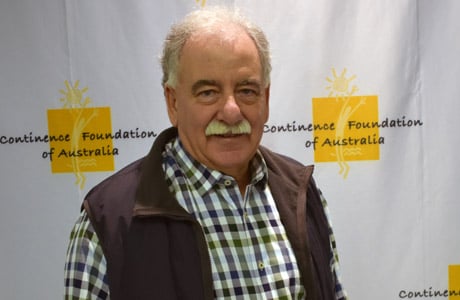For many people living with incontinence, Sacral Nerve Stimulation (SNS) has delivered life-changing results where all other treatments failed. Urogynaecologist and Continence Foundation Board Vice-President, Dr Ian Tucker explains.

The treatment has given sufferers genuine hope for the improvement of these debilitating conditions.
Neuromodulation is a treatment that delivers either electricity, drugs or magnetic impulses to nerves in an effort to change their activity.
Sacral nerve stimulation is a means of directly stimulating the third sacral nerve with an electrical current to alter/improve bladder and bowel function, and modulate pelvic pain.
Over the past 23 years, there have been many improvements with the technique of SNS. Symptoms SNS can treat:
• Refractory urgency, urge incontinence
• Voiding difficulty
• Pelvic pain [surprisingly not covered directly by Medicare]
• Faecal incontinence
• Constipation
Urinary urgency, urge incontinence, enuresis and the closely related problem of faecal urgency and incontinence are the two most common reasons for considering SNS.
The cause of these conditions may be undetermined, familial, associated with various neurological injuries or disease states while bladder tumours, polyps or stones must be excluded before considering this treatment.
Almost all patients considering SNS will have had, and for various reasons failed, standard medical therapy such as attention to pelvic floor function and various medications, and as these conditions are often life-long, no treatment can guarantee a cure, but the improvements gained are often life-changing.
Both women and men can be candidates for SNS, however at this stage the SNS system is more commonly used to treat women. Clearly all patients must be medically fit for surgery and anticoagulants/blood thinning agents must be ceased well prior to surgery.
Since its inception, approximately 4500 patients have received this treatment in Australia with the number expected to increase as awareness and confidence in the procedure grows.
How is it performed?
SNS is carried out in two stages.
• Stage 1: insertion of the SNS lead through a 1cm incision in the buttock and with x-ray assistance Electrical stimulation through a small hole in the sacrum called the ‘third sacral foramen’ along the path of the third sacral nerve. This is the nerve that mediates the control of bladder and bowel function from the brain and spinal cord. Oncepositioned, the lead is then tunneled to the flank or buttock, and connected to an external lead passing through the skin to a temporary nerve stimulator.
• Stage 2: If the patient experiences a significant improvement in the first 1-2 weeks after surgery, stage 2 involves removal of the external lead and insertion of the pulse generator.
Success rates
The recently published INSITE* trial has confirmed an overall success rate of 70 per cent. When successful, the procedure is usually life changing with patients reporting a 3-5 times improvement in quality of life over standard medical treatments, with 45% reporting complete continence.
How long does SNS last?
The INSITE trial has confirmed what those of us with very long experience (more than 20 years) with SNS have observed, a long-term success rate of more than 80% at 5 years.
Current pulse generators have a battery life of up to 5 years and soon rechargeable IPG’s will be available with projected battery life of more than 10 years.
Cost of SNS
The SNS system costs around $18,000. Although this may seem substantial, it is considerably less than the cost of a knee joint replacement and the procedure is Pharmaceutical Benefits Scheme (PBS) funded.
What is the recovery time following SNS?
An important factor in recovery is to minimise the risk of the lead moving. Because the greatest risk for this is in the first few weeks after surgery, patients are advised to avoid strenuous exercise, especially twisting and bending movements for at least two weeks after surgery. The surgery itself is relatively minor and often not associated with much pain.
Risks and complications of SNS
Every surgical procedure and medical treatment has potential issues and adverse events. The INSITE trial reported no unanticipated adverse events, with typical adverse experiences including, lead movement, infection - 3% [mostly in diabetics], lead fracture – 1%, high impedance in the lead, electrical ‘shorting’ of the lead and pain at IPG site – 5%. These adverse events are easily corrected.
Where is SNS available?
In most major Australian cities there are urogynaecologists, urologists and colorectal surgeons with the appropriate training in the procedure of SNS
Do you think you may benefit from SNS?
There is so much that can be done to help patients with the debilitating problems associated with incontinence.
Firstly, thorough investigation to accurately assess the problem[s] is fundamental and conservative treatment is always recommended as a first step. Only after conservative options have failed, should SNS be considered.
There are many patients whose lives have been transformed with SNS and all specialists will be able to put you in touch with patients who are willing to talk about their SNS experience to ensure you are fully aware of the every aspect of this treatment.
For clinicians such as myself, SNS is arguably the most exciting and satisfying treatment of any. It is immensely gratifying to see the successes but we are always trying to make progress to further improve the results and primarily the quality of life for the patient.
*INSITE trial results reproduced with permission from Medtronic

